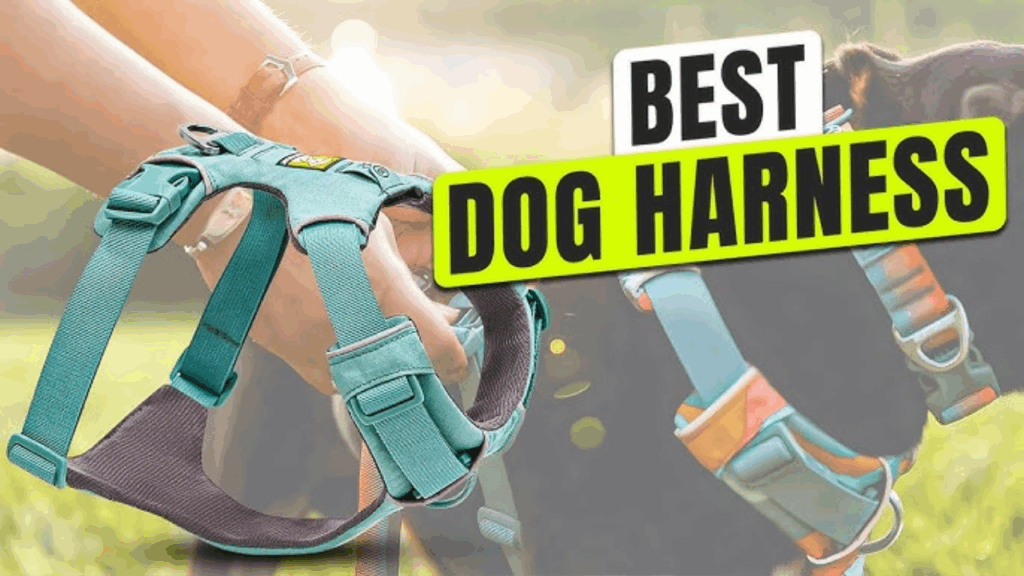Finding the best dog harness can dramatically improve your walks, training sessions, and overall control over your furry friend—while ensuring their comfort and safety. Whether you’re raising a puppy, managing a puller, or just want a more secure walking option than a collar, the right harness makes a big difference.
In this article, we’ll explore why harnesses are better for many dogs, the types available, how to choose the best one for your dog’s needs, and some of the top-rated harnesses trusted by pet parents and trainers alike.
Why Choose a Dog Harness?
Many dog owners switch from collars to harnesses for comfort, safety, and better control—especially with strong, energetic dogs.
Benefits of Using a Harness:
- Reduces pulling: Front-clip harnesses discourage pulling without choking.
- Prevents choking or neck injury: Unlike collars, harnesses distribute pressure across the chest and shoulders.
- Better control: Ideal for training, leash-reactive dogs, or crowded environments.
- Escape-proof options: Some harnesses are designed to keep escape artists secure.
- Ideal for small or delicate dogs: Safer for toy breeds prone to tracheal collapse.
Types of Dog Harnesses
READ MORE: The Best Canned Dog Food
There’s no one-size-fits-all solution. The best harness depends on your dog’s size, behavior, and purpose (daily walks, training, hiking, etc.).
1. Back-Clip Harness
- Leash attachment: On top, between shoulder blades
- Best for: Calm dogs, small breeds, everyday walks
2. Front-Clip (No-Pull) Harness
- Leash attachment: At the chest
- Best for: Pullers, leash-reactive dogs, training
3. Dual-Clip Harness
- Leash attachment: Both front and back
- Best for: Versatile control; allows training and normal walking
4. Step-In Harness
- Design: Dog steps into it and it buckles on top
- Best for: Small dogs or dogs uncomfortable with overhead harnesses
5. Vest Harness
- Design: Padded and covers more of the body
- Best for: Comfort, cold weather, short-haired breeds
6. Escape-Proof Harness
- Design: Often has extra belly straps
- Best for: Nervous, slender, or escape-prone dogs
Features to Look For in a Dog Harness
Not all harnesses are made equally. Here’s what to check before buying:
1. Secure Fit
The harness should fit snugly but not tightly. Look for adjustable straps to customize the fit for your dog’s chest and neck.
2. Comfortable Materials
Padded chest plates and breathable fabrics prevent chafing or overheating.
3. Durability
Choose strong hardware and reinforced stitching, especially for large or strong dogs.
4. Reflective Trim
Helps improve visibility during early morning or evening walks.
5. Easy to Put On/Take Off
Step-in or over-the-head styles vary in convenience. Try what works best for your dog’s temperament.
Best Dog Harnesses by Category
Here are top-rated harnesses based on real-world performance, reviews, and expert recommendations:
Best Overall Dog Harness: Ruffwear Front Range Harness
- Features: Dual leash attachments, padded chest, four adjustment points
- Why It’s Great: Combines durability, comfort, and control—ideal for daily walks and adventures.
- Best for: All breeds and activity levels
Best No-Pull Harness: PetSafe Easy Walk
- Features: Front-clip design that steers dog when they pull
- Why It’s Great: Simple, effective design to stop pulling gently
- Best for: Strong pullers or dogs in leash training
Best Harness for Hiking: Kurgo Journey Air Harness
- Features: Durable padded design, back and front leash clips, handle for lifting
- Why It’s Great: Built for rugged terrain with breathable materials
- Best for: Active or outdoor-loving dogs
Best for Small Dogs: Puppia Soft Dog Harness
- Features: Soft mesh fabric, simple design, step-in style
- Why It’s Great: Lightweight, breathable, and comfortable for toy breeds
- Best for: Yorkies, Pomeranians, Chihuahuas
Best Escape-Proof Harness: Ruffwear Web Master
- Features: Three straps for extra security, padded support, lifting handle
- Why It’s Great: Trusted by rescue and working dog teams for tough escape artists
- Best for: Nervous or slim-bodied dogs like Greyhounds or Basenjis
Best Budget Option: Rabbitgoo No-Pull Harness
- Features: Front and back clips, reflective design, adjustable straps
- Why It’s Great: Affordable yet feature-rich; suitable for all dog sizes
- Best for: New dog owners or those on a budget
How to Measure Your Dog for a Harness
An ill-fitting harness can cause rubbing, chafing, or even let your dog slip out. Most brands offer sizing guides. You’ll typically need:
- Chest girth: Measure around the widest part of your dog’s chest, behind the front legs.
- Neck circumference: Measure around the base of the neck (not high like a collar).
- Weight: Some brands include weight ranges for sizing.
Always check the brand’s specific size chart before purchasing.
Tips for Getting Your Dog Used to a Harness
If your dog isn’t used to wearing a harness, here’s how to make the transition smooth:
1. Let Them Sniff It First
Lay the harness on the ground and allow your dog to explore it with treats and praise.
2. Put It On Casually
Start indoors with short sessions. Gradually increase how long they wear it.
3. Associate It With Good Things
Use the harness only for positive experiences—walks, treats, playtime.
4. Adjust Comfortably
Make sure it’s snug (you should be able to fit 2 fingers between the harness and your dog’s body) but not tight.
When to Replace a Harness
Even the best harness won’t last forever. Replace it when:
- It shows signs of fraying or tearing
- Buckles or clips don’t work securely
- Your dog outgrows it
- It no longer fits comfortably
Final Thoughts
The best dog harness provides more than control—it ensures safety, comfort, and confidence for both you and your dog. Whether you need a no-pull option, a hiking companion, or a stylish harness for city strolls, there’s a perfect match out there.
Always consider your dog’s size, behavior, and lifestyle when choosing. And remember: a harness is not just a tool, it’s a part of your dog’s everyday comfort and wellbeing.

Andy Parker is a dog lover, writer, and senior editor at BarkPicks. With years of experience covering canine health, training, and gear, he helps pet parents make smarter choices for happier, healthier dogs. Andy shares his home (and heart) with two rescue pups, Charlie and Mia.



